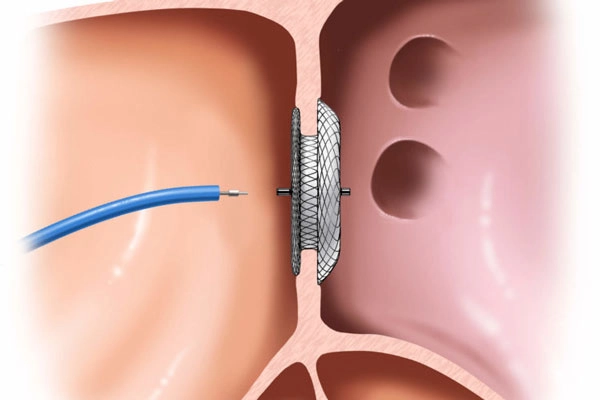ASD / PDA Device closure

ASD Device Closure
Atrial Septal Defect (ASD) is a congenital heart defect characterized by an abnormal opening in the atrial septum, the wall that separates the heart’s two upper chambers, the right and left atria. This opening allows oxygen-rich blood from the left atrium to flow into the right atrium and subsequently into the right ventricle and pulmonary artery, causing increased blood flow to the lungs. Over time, this can lead to heart-related problems and symptoms such as fatigue, shortness of breath, and increased risk of infections.
ASD device closure is a minimally invasive procedure used to repair this defect. It offers a safer and less invasive alternative to open-heart surgery. During the procedure, a cardiologist guides a catheter through a blood vessel, typically starting in the groin, up to the heart. Through the catheter, a special device, known as an occluder, is positioned to block the abnormal opening. Over time, the patient's own tissue covers the occluder, effectively sealing the defect.
The advantages of ASD device closure are numerous. It is associated with shorter recovery times, reduced scarring, and less post-operative pain compared to traditional open-heart surgery. Most patients experience immediate relief from their symptoms and improved overall heart function. Additionally, the procedure is highly successful, and complications are rare.
However, not all ASDs are suitable for device closure, as factors like the size, location, and overall health of the patient play a role in determining candidacy. Patients who have undergone device closure will require regular follow-up appointments to monitor the device's position and their overall heart health.
PDA Device Closure
Patent Ductus Arteriosus (PDA) is a congenital heart defect where a blood vessel, the ductus arteriosus, fails to close after birth, causing abnormal blood flow between the aorta and pulmonary artery. PDA can lead to various health issues, such as heart failure and increased risk of infection.
Device closure is a minimally invasive procedure used to treat PDA. It involves inserting a catheter into a blood vessel, guiding it to the PDA site, and placing a specially designed occluder device to seal the ductus arteriosus.
This procedure offers numerous advantages, including reduced recovery time, minimal scarring, and fewer complications compared to traditional open-heart surgery.
Device closure effectively blocks the abnormal blood flow, allowing patients to experience immediate relief from PDA-related symptoms like shortness of breath and fatigue.

Patient eligibility for device closure depends on factors such as the size and location of the PDA and the individual's overall health.
device closure is a minimally invasive and effective solution for treating PDA, offering patients a safer and less disruptive alternative to open-heart surgery.
Meet our Specialist

Dr. Ravninder Singh Kuka
Dr Ravninder Singh Kuka is Assistant Director and Senior Consultant of Interventional Cardiology at SPS Hospitals, Ludhiana. He has an experience of 10 years in dealing with cardiac patients
Book Your Consultation
prioritize your cardiovascular well-being
